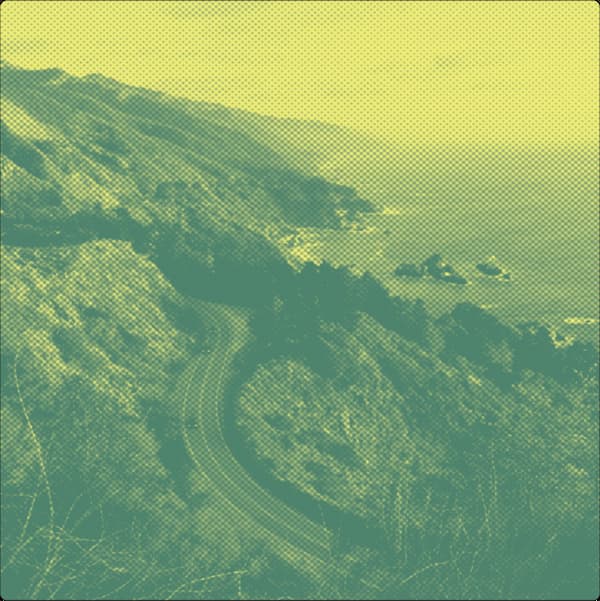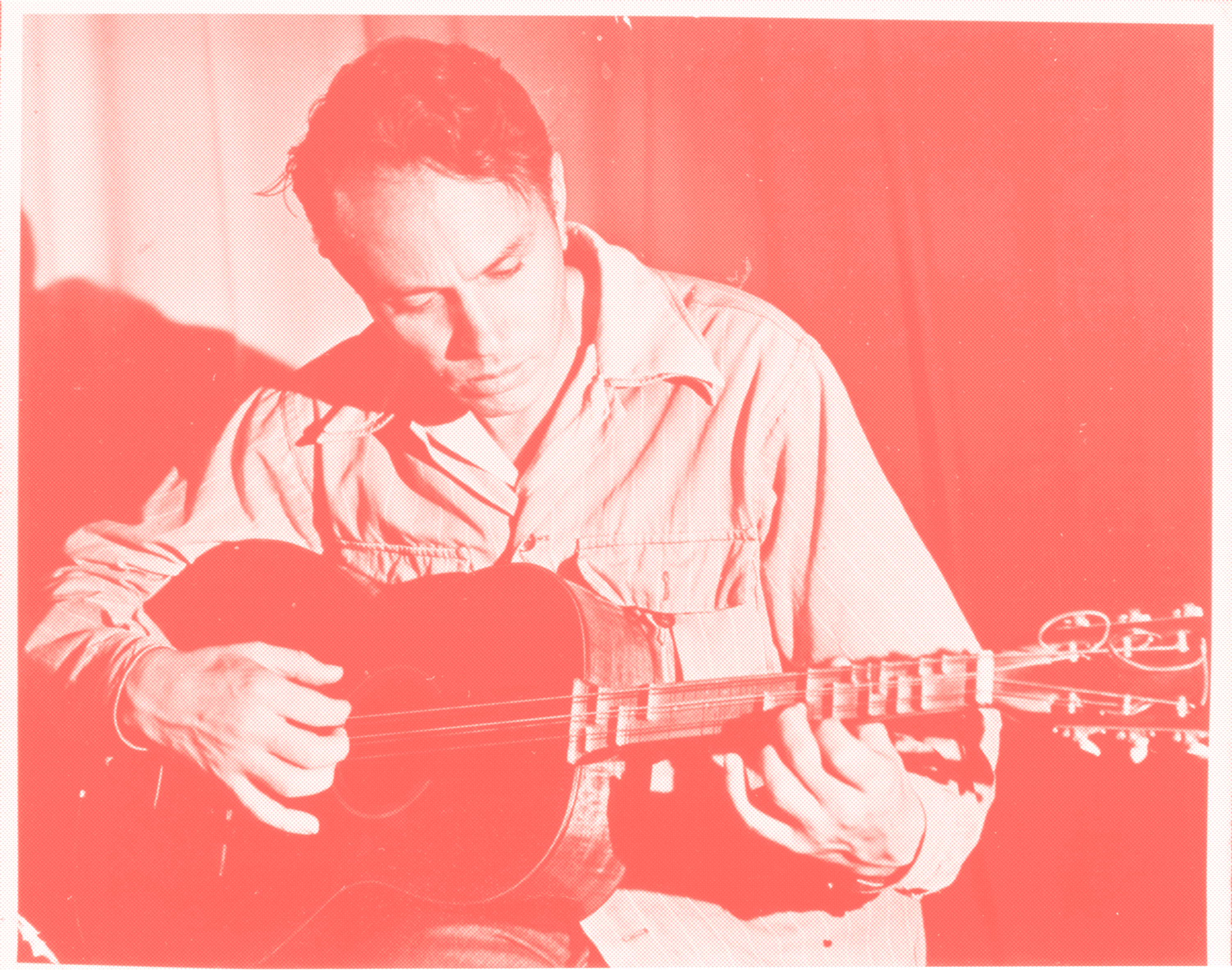By Tim Page
A Meditation on Harry Partch, Hitchhiking and Hoboism
The maverick composer hitchhiked across the Golden State and beyond in “search for his soul.” Discover how Partch’s seeking spirit was reflected in his singular sound.
“To the hitchhiker himself, there is one final word. Hold your head high -- not arrogantly but proudly. The road develops characteristics in you which are requisites for entrance into business and professional life. If you are impatient, it teaches you to wait. If you have a temper, it gives you a placid nature. If you are selfish, it teaches you to be generous. If you are impetuous, it forces you to think.” - Samuel Zeidman, April 1937 “Thumb Fun” Review of Reviews
The California composer Harry Partch (1901-1974) – who adopted very few of Zeidman’s “lessons” himself – nevertheless remains one of the totemic legends of American hitchhiking, up there with Clark Gable and Claudette Colbert in “It Happened One Night,” John Steinbeck’s Tom Joad and the young Jack Kerouac. The practice is still legal in 44 of the American states, including California, but you no longer see as many hitchhikers as you once did. They are banned from all freeways, and many drivers seem to have decided that it was not worth the perceived risk of picking somebody up, whether through fear of crime (vastly overstated) or an unwillingness to share their automotive cocoon with a stranger who might turn out to be wearisome. Those of us who consider the unfamiliar roads that we traveled and the unexpected conversations that we had in our youth a large part of our informal education mourn this disappearance. What better way to absorb, to understand --to feel – the multiplicity of gigantic California?
One day in February 1940, Partch was outside Barstow, waiting for a lift on Route 66 (could there be a much more “American” road?). The town has always been the antithesis of the “swimmin’ pools, movie stars” popular image of California – the temperature usually goes up above 100 degrees in the warm months and winter days often begin below freezing.
“Seekers after free rides get to Barstow from the west very easily, but they don’t go on so easily because they have the wide Mojave Desert to cross,” Partch wrote. “The next inhabited spots boasting more than a filling station and a night club are Las Vegas, Nevada 157 miles to the northeast and Needles, California 153 miles to the east. Over these lonesome stretches ridges are scare and Barstow became a hitchhiker’s bottleneck.”
(It should be remembered that Las Vegas had not yet puffed up into a tourist destination; the breakdown of an automobile – even a simple running out of gas -- could be fatal.)
The Great Depression had then lasted a decade and millions of Americans were out of work, traveling the country in search of a job – or, perhaps, just a hand-out to see them through another day. Partch had been working in the California farmlands, harvesting fruit since 1935. “From the highways, looking out on the thriving fields, the human reality of California farm labor seemed almost invisible” the historian and biographer Roger Morris later wrote. “You could travel the length of the valley at high season without being aware that a phantom army was somewhere camped nearby. But once you know that this curious hidden world exists you are forever conscious.”
Partch was part of that “hidden world” and he was now stuck in Barstow. Under a bridge, he found some graffiti that had been scratched or scrawled by people who had stood there before him. He wrote down eight of the messages and would soon set them to music. He finished the original version of “Barstow” in 1942 – a solo recording of the piece was issued in the invaluable “Harry Partch 1942” -- but he would continue to touch it up until 1968
The first of these sets the mood:
It's January 26. I'm freezing.
Ed Fitzgerald. Age 19. Five feet, ten inches.
Black hair, brown eyes.
Going home to Boston, Massachusetts.
It's 4:00, and I'm hungry and broke.
I wish I was dead.
But today I am a man.
Partch himself had been 19 when he was orphaned, after an unspeakably violent accident changing streetcars in Los Angeles had crushed his mother beyond recognition. He had studied music from early childhood – many years later, he could still play Chopin from memory and with feeling. But, as the writer Jonathan Cott put it in an article he wrote about Partch for Rolling Stone: the composer, “woke up one morning and realized that he and Western European music were through. He gathered up 16 years worth of compositions, placed them in a pot-bellied stove, and burned them all in what must have been a ravishing auto-da-fe.”
He spent much of his life in the California desert. There, in much the same spirit that led Simon Rodia to create the Watts Tower, Partch fashioned instruments out of fuel tanks, chemical jars, shell casings, bottles and old keyboards. He invented his own tuning systems and took at least as much of his inspiration from the music of the Far East as he did from Europe. He lengthened fretboards to create “adapted” guitars and violas and fashioned his own Chromelodeon, an unusual 88-key reed organ on which, in some cases, a single depressed key will produce the sound of a triad.
A defiant, hard-drinking maverick who detested the musical mainstream – even the avant-garde musical mainstream (he despised John Cage) -- Partch was a cantankerous man who blew up many personal and professional relationships that could have done him much good. The gentle and ever-patient Otto Luening (whose own mentors included Ferruccio Busoni and James Joyce) helped him obtain Guggenheim grants; later on, the fiercely devoted patron of California music Betty Freeman stood by him steadfastly. His performers, too, were devoted to him and one of them, the late composer Dean Drummond, the became director and curator of Partch's homemade instruments. Drummond’s own group, Newband, also commissioned additional works for Partch’s forces.
Since his death, Partch has been the subject of a worthy biography by Bob Gilmore. Equally valuable, the microtonal guitarist and composer John Schneider has collected Partch’s writings and brought out many of his private recordings, including an extraordinary explanatory lecture he gave at the Eastman School of Music in 1942 that somehow survived chaos and institutional house cleanings for more than 75 years before it was issued on disc. Another of Schneider’s recordings, “Bitter Music” (Bridge Records) is based on a copy of a no-longer extant diary and melds the music Partch was creating with a spoken recitation of the thoughts that were then going through his head.
Partch once summed up his aesthetic: "The work that I have been doing these many years parallels much in the attitudes and actions of primitive man. He found sound-magic in the common materials around him. He then proceeded to make the vehicle, the instrument, as visually beautiful as he could. Finally, he involved the sound-magic and the visual beauty in his everyday words and experiences, his ritual and drama, in order to lend greater meaning to his life. This is my trinity: sound-magic, visual beauty, experience-ritual."
Article header image: Title: Photographs, Date: 1941. Image from Music and Performing Arts Library Harry Partch Collection, 1914-2007 (Series 4, Sub-series 2: Box 29, Folder 1), Sousa Archives and Center for American Music, University of Illinois at Urbana-Champaign.
—
Tim Page won the Pulitzer Prize for Criticism in 1997 and is Professor Emeritus of Musicology at the Thornton School of Music, University of Southern California.


